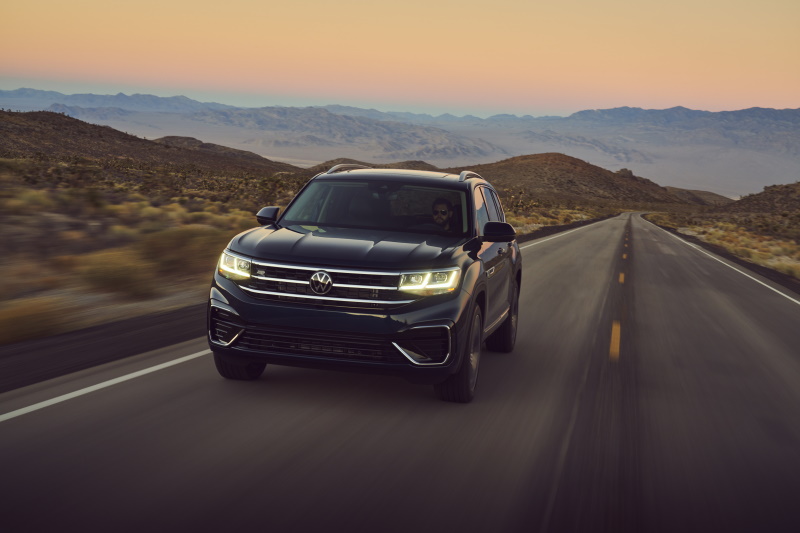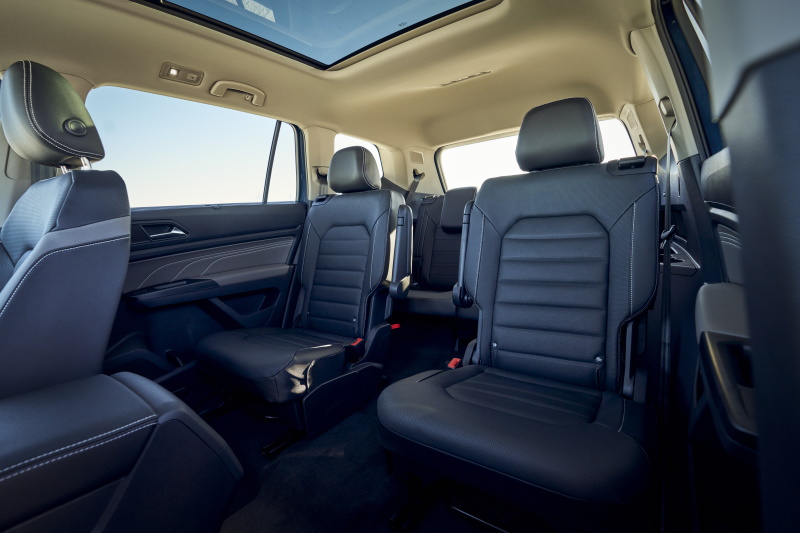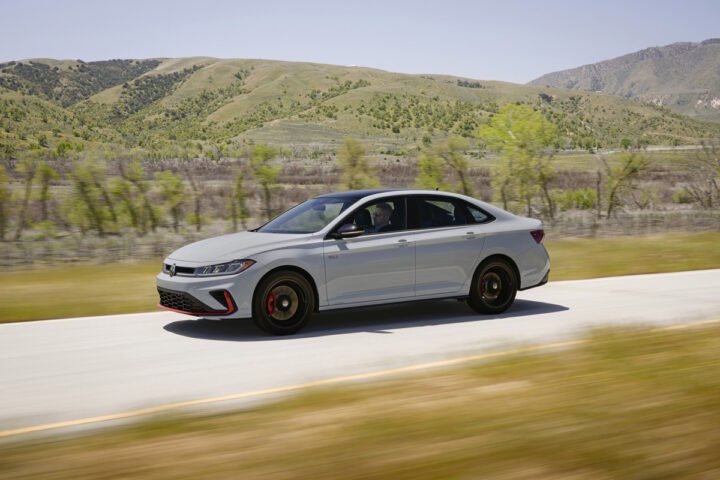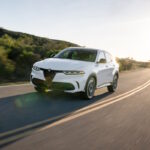Three-row SUVs. They range from smaller SUVs like the Mercedes-Benz GLB up to the Ford Expedition MAX. They’re created for one reason: transport the family, friends, pets, and people that find out you have more seats than they do. The competition in this segment is fierce. Almost all automakers are in on this cash-cow segment. One of these automakers is Volkswagen. Until a few years ago, Volkswagen wasn’t in the business of three-row SUVs. That all changed when they brought out the Atlas, which was aimed straight at the Ford Explorer and Chevy Traverse.
Volkswagen was a little late to the game with the Atlas, but better late than never. It’s much bigger than the Tiguan and has a lot more space. My Atlas was a mid-range SE with Technology with 4Motion all-wheel-drive and 3.6-liter V6. Compared to the Tiguan, the Atlas looks a lot more “generic SUV”. The Atlas isn’t exactly handsome but isn’t ugly either. Looking more at the exterior, you’ll see that it needs the R-Line design model. Even if it isn’t the most exciting to look at, the Tourmaline Blue Metallic and 20” wheels do give some color to the body. There’s a power tailgate which is standard practice but still nice to have.
Inside, here’s a surprise: it’s a Volkswagen! The cabin is virtually the same as every other Volkswagen. In front of the driver is the multi-function steering wheel which includes the safety functions and the adaptive cruise control. Unlike higher up models, SE models don’t get Volkswagen’s digital dials. Instead, there are traditional dials with a small display that shows information such as a speedometer. Digital dials are nice to have, but there’s absolutely nothing wrong with the tried-and-true traditional dials.
Next to the driver is the familiar Volkswagen infotainment system. The 8.0” screen is easy to use, but SE models lack navigation. This isn’t bad since you can quickly connect to Apple CarPlay or Android Auto. Heating controls are simple to use and the Atlas does get heated seats, though not a heated steering wheel. You can also disable the stop-start system which you’ll see later on why you may always disable it. There are a few USB ports along with a 12 V socket. You’ll also see a little tray on the top of the dash which can take virtually nothing since everything I put flew away when I drove.
One of the biggest reasons to get an SUV like the Atlas is the safety of all-wheel-drive. There are four different all-wheel-drive modes but there were only two that mattered. Yes, you can drive on mud, grass, and other terrain but I never used those. Instead, I used the Normal mode and Snow mode. Thanks to Chicagoland realizing it’s winter and needed to catch up on making it snow, I used Snow mode a majority of the time on slick roads in both Illinois and Wisconsin. Needless to say, the Atlas did quite well in the snow. Any owner will get some peace-of-mind with regular snowfall.
In the middle of the swivel wheel for the various terrain modes is the button for different driving modes. These only work in Regular Mode and have the same Eco, Normal, Sport, and Individual. These tie into the engine and powertrain to modulate the transmission and engine. While most people will just keep the Atlas in Normal, using Individual brings the best of all modes. I usually have steering and Adaptive Cruise Control in Sport while suspension and transmission are kept in Normal. These are the best to have the Atlas in because the engine is downright odd.
The highest models you can get in the Atlas lineup are the ones with the 3.6-liter V6 and 4Motion. Mine had these and at first, I was excited. A nice, natural-aspirated V6 is a breath of fresh air in this land of EVs and turbocharging. Unfortunately, the V6 falls flat. It may make 276-horsepower and 266 lb-ft, but it’s the best on the highway or around town. Since 0-60 takes around 8-seconds with its eight-speed automatic, the Atlas feels slow. Surprisingly, the inline-four powered Atlas is almost a full second quicker. Up to 30 MPH, the Atlas can definitely keep up with traffic. Once you accelerate past 55 MPH on backroads, the Atlas feels like it loses some puff.
Where Volkswagen and the Atlas do well are handling, comfort, and safety features. One of my quirks is putting the car into Eco mode when traveling long distances with the adaptive-cruise-control turned on. Any other time and Eco mode is slow and not worth it. As I said, the SE with Technology has adaptive-cruise-control along with blind-spot monitoring and lane-keep warning. Even on crappy snow-covered potholed roads, the Atlas kept its composure. Only bigger Illinois potholes made the Atlas a little shaken. See what I did there?
Anyways, let’s go through some of the trim levels. There are three with various visual packages. This SE with Technology and the optional all-wheel-drive and V6 comes in at around $41,000. That’s not too terrible for an SUV this big and spacious, but it is lacking features that higher trim levels have. If you go up to the SEL models, you do get digital dials and the ability to get real leather ventilated seats, an upgraded infotainment system with navigation, and heated second-row seats. They’re nice features but can get pricy at almost $50,000.
So, if you want an Atlas, which one should you get? I’d go with the Atlas SEL with 4Motion and the 2.0-liter turbocharged engine. Being quicker and having better fuel-economy makes sense. Also, the SEL has more features such as the digital dials and standard panoramic sunroof. This comes in around $44,000 which is $3,000 more than the SE with Technology package but seems worth it. The Atlas is a decent car and does exactly what it’s supposed to be. It’s family transport with comfort and Germanic styling. Skip the V6 and you should be all good.

























